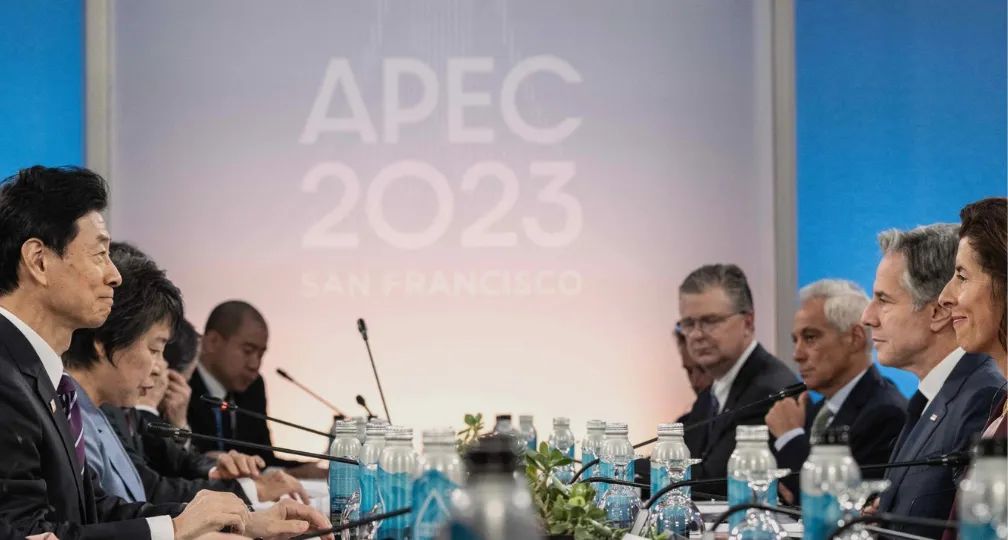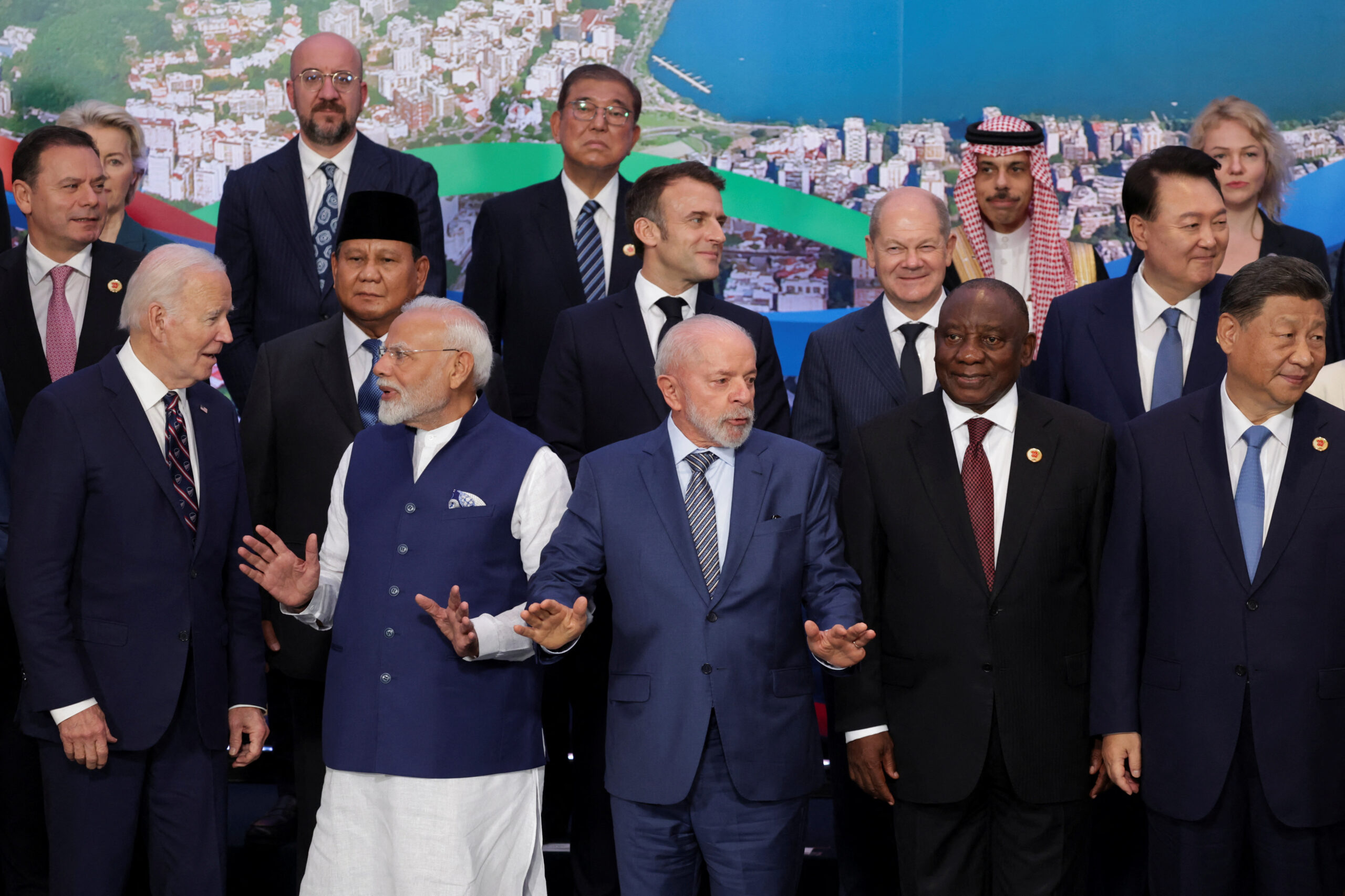The U.S.-Japan gap: a challenge in economicsecurity cooperation

In October, the Ministry of Economy, Trade and Industry released an action plan on economic security that aims to enhance Japan’s industrial and technological infrastructure through promoting and protecting industries, while stressing the importance of global partnerships. Politicians have also been actively promoting economic security, with the ruling Liberal Democratic Party proposing to establish economic security dialogue with like-minded countries. What has served as the key to such minilateral — involving a small number of countries — and multilateral economic security cooperation has been the bilateral cooperation between Tokyo and Washington.
US-Japan economic security cooperation
The U.S. is one of the countries with which Japan deepened economic security cooperation the most. In addition to bilateral frameworks, such as the Japan-U.S. Economic Policy Consultative Committee (the economic “two-plus-two”) and the Japan-U.S. Commercial and Industrial Partnership, minilateral frameworks such as the Indo-Pacific Economic Framework for Prosperity and the “Quad” leaders’ summit — a grouping of Japan, the U.S., Australia and India — have also worked as a platform for the two countries to promote economic security cooperation.
Technological cooperation in the field of cutting-edge semiconductors is also advancing steadily, involving the private sector. While such bilateral cooperation appears to be progressing, the two countries’ economic security interests are not necessarily fully aligned. A divergence between the two nations’ economic security policies is emerging, with gaps in each element of economic security, including China policy, economic structure and industrial competitiveness. And the biggest sources of the divergence between the U.S. and Japan are their views on free trade and the widening concept of national security.
In order to further strengthen international economic security cooperation, it is necessary to cope with such gaps between Tokyo and Washington.
Advanced semiconductor export controls
One of the clearest examples of such a gap was Japan’s response to the U.S.’ comprehensive export controls on advanced semiconductors and semiconductor manufacturing equipment to China. In October 2022, the U.S. Department of Commerce effectively banned exports to China of items needed to produce high-end chips and restricted U.S. persons’ support for development and production of certain chips at facilities in China. It also prevented companies in third countries from exporting products containing U.S. technologies to China.
Upon request by Washington, the Japanese government added 23 items to its list of products subject to export restrictions in July 2023. Specifically, equipment manufacturers are required to obtain individual permits to export those 23 items in six categories of equipment used in advanced semiconductor manufacturing, such as deposition and lithography, to all countries and regions except for preferred trade countries covered by comprehensive licenses. Some media outlets reported that such a response by Tokyo aligns with and follows the U.S. government’s policy.
Although the two governments’ policies are headed in the same direction in terms of restricting exports of semiconductor manufacturing equipment, the actual measures differ largely. For instance, although having China in mind, Japanese export control measures do not target certain countries. The measures also differ from those of the U.S. in that restrictions are not imposed on people or foreign companies. Moreover, Japan’s export control includes items used in the production of lower-end chips, implying wider operational discretion.
Cooperation difficulties
Cooperating in the field of economic security is not easy. This is because while cooperation among supplying countries is essential for export control measures to function to achieve economic security, restrictions on exports directly lead to reducing their companies’ market share. As countries’ exposure and competitiveness differ, the economic losses or the impact of taking the same measure varies.
It is extremely difficult for even Japan and the U.S. to completely reconcile their economic rationality. A comprehensive set of export control measures scores relatively high in terms of economic rationality for the U.S., as its sales of semiconductor manufacturing equipment to China are relatively small, but such measures score relatively low in economic rationality for Japan, whose exports of such equipment to China occupy as much as roughly 40% of total exports.
Thus, Japan’s measures, which were regarded to have followed the U.S., were in fact designed in such a way as to maintain economic rationality for Japan. This implies how difficult it is to cooperate in economic security even for Japan and the U.S., which share common security interests.
Factors behind economic security
In order to understand the differences between the two countries’ export controls more deeply, we have to take into account two factors in addition to the difficulty of aligning economic security interests.
The first factor is the difference in the stance toward free trade. The U.S. believes that free trade is the cause of the U.S. economy’s dependence on China and is oriented toward a new trade order, moving away from the traditional free trade regime. On the other hand, Japan maintains its stance of advocating free trade, and introduced new export regulations within the framework in an effort to keep pace with the U.S. for national security benefits. The difference in the approach toward export controls to China was the result of the two countries starting from different standpoints but heading in the same direction. Therefore, the gaps in their measures can be interpreted as inevitable.
The second factor is the gap in the expanding concept of national security. This leads to the differences in export control objectives. The stricter export control measures issued by the U.S. in October 2022 are intended to restrict China’s ability to both purchase and manufacture certain high-end chips used in military applications. Japan added new items to the list of products subject to export restrictions also to prevent their use for military purposes.
On the surface, the two countries’ measures appear to be keeping pace with each other. However, the U.S.’ restrictions go beyond supplementing the Wassenaar Arrangement export control regime, aimed at preventing the military use of certain technologies, and carry a strong connotation of attempting to delay the growth of China’s semiconductor industry.
While the U.S. has been adopting a policy of selective competition with China, as can be seen in its use of terms like “de-risking” and a “small-yard, high-fence” approach, its semiconductor policy is beginning to shift toward comprehensive competition between democratic and authoritarian systems. Japan’s policy, on the other hand, is not intended to slow China’s industrial development as such, although its impact could vary, depending on how the measures are implemented.
Washington and Tokyo share fundamental interests in terms of national security, but are not necessarily on the same page regarding how much and how quickly they should expand the concept. A series of new export control measures recently implemented by the two governments showed their determination to cooperate despite the gaps between Tokyo and Washington on their views on free trade and the concept of national security. However, at the same time, this revealed limits to such efforts as well.
Cooperation with the U.S. and others
With the U.S. presidential election approaching, U.S. President Joe Biden’s administration is unlikely to soften its stance toward China, and more protectionist industrial policies are expected to be adopted under the name of economic security. As a matter of fact, the Biden administration, which is regarded as prioritizing cooperation with allies, has already been taking further unilateral actions to adopt stricter regulations against China.
In August, the Biden administration released an executive order directing the Department of Treasury to create a new regulatory program to prohibit or require notification of U.S. direct investments to China in certain sensitive sectors such as semiconductors, artificial intelligence and quantum technologies.
In October, the U.S. updated the October 2022 regulations on advanced semiconductor-related exports to China, expanding the scope of the restrictions and taking measures to prevent circumvention via third countries. And in December, the U.S. Commerce Department announced that it would launch a survey to figure out U.S. reliance on Chinese legacy chips. Commerce Secretary Gina Raimondo stated that raising tariffs is an option.
It is likely that the existing gap in economic security between the two countries will widen further even if the Democrats win the election, and more so if the Republicans win. Japan will be increasingly pressured to balance ties with its most important ally, and maintain and strengthen the free trade system. Under these circumstances, the biggest goal for Japan is to shape economic security policy not only with the U.S., but also with other countries and regions, based on a free trade regime.
In economic security cooperation with the U.S., Japan should consider not only differences in economic rationale but also differences in position toward free trade and the expanding national security concept. Deciding where Japan can fully be on the same page with the U.S. and where it cannot may require opposing the U.S. at times. As uncertainties grow this year with many countries holding elections, Japan has a big role to play in deepening economic security cooperation.
[Note] This article was posted to the Japan Times on March 5, 2024:
https://www.japantimes.co.jp/commentary/2024/03/05/japan/economic-security-cooperation/
(Photo Credit: AFP / Aflo)

Geoeconomic Briefing
Geoeconomic Briefing is a series featuring researchers at the IOG focused on Japan’s challenges in that field. It also provides analyses of the state of the world and trade risks, as well as technological and industrial structures (Editor-in-chief: Dr. Kazuto Suzuki, Director, Institute of Geoeconomics (IOG); Professor, The University of Tokyo).
Disclaimer: The opinions expressed in Geoeconomic Briefing do not necessarily reflect those of the International House of Japan, Asia Pacific Initiative (API), the Institute of Geoeconomics (IOG) or any other organizations to which the author belongs.


Visiting Research Fellow
Mariko Togashi has been a Visiting Research Fellow at the Institute of Geoeconomics (IOG) since January 2024. Prior to IOG, Mariko was a Research Fellow for Japanese Security and Defence Policy / Matsumoto-Samata Fellow at the International Institute for Strategic Studies (IISS) in London for two years, focusing on Japan’s economic security policy. She also worked as a research assistant to Dr. Kent Calder at Edwin O. Reischauer Center for East Asian Studies, as well as a research intern at CSIS’ Economics Program, focusing on the economic security of the U.S., Japan, and China. Before taking her master’s degree, Mariko worked as an equity analyst in the Japanese machinery sector at Deutsche Bank and Bank of America Merrill Lynch (currently BofA Securities) for more than five years. Mariko earned her master’s degree in international economics and strategic studies from Johns Hopkins University School of Advanced International Studies and her bachelor’s degree in international law from Keio University, Tokyo.
View Profile The Lessons of the Nippon Steel Saga2025.07.08
The Lessons of the Nippon Steel Saga2025.07.08 From dollar hegemony to currency multipolarity?2025.06.25
From dollar hegemony to currency multipolarity?2025.06.25 The Big Continuity in Trump’s International Economic Policy2025.06.11
The Big Continuity in Trump’s International Economic Policy2025.06.11 India’s Strategic Autonomy in a Trumpian World2025.07.11
India’s Strategic Autonomy in a Trumpian World2025.07.11 The Tyranny of Geography: Okinawa in the era of great power competition2024.02.09
The Tyranny of Geography: Okinawa in the era of great power competition2024.02.09













